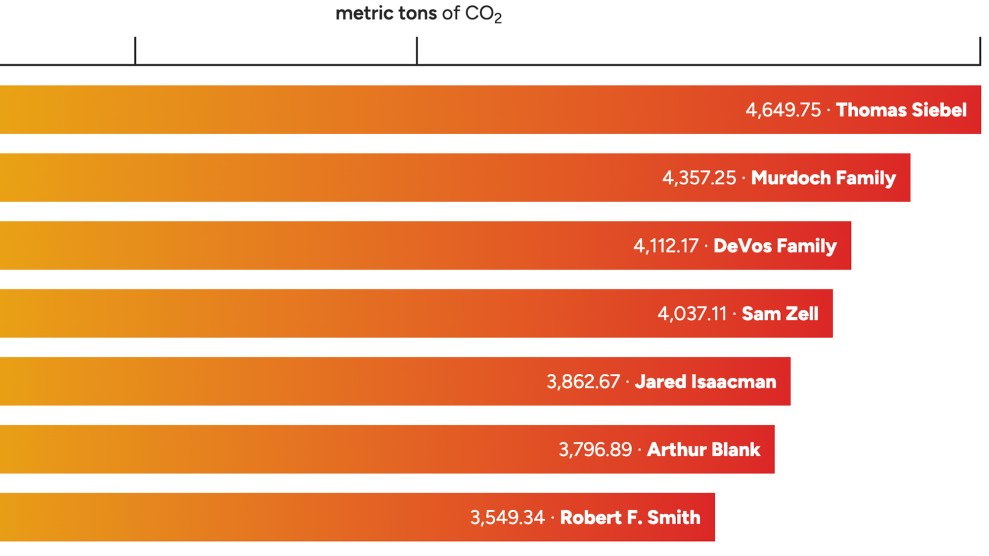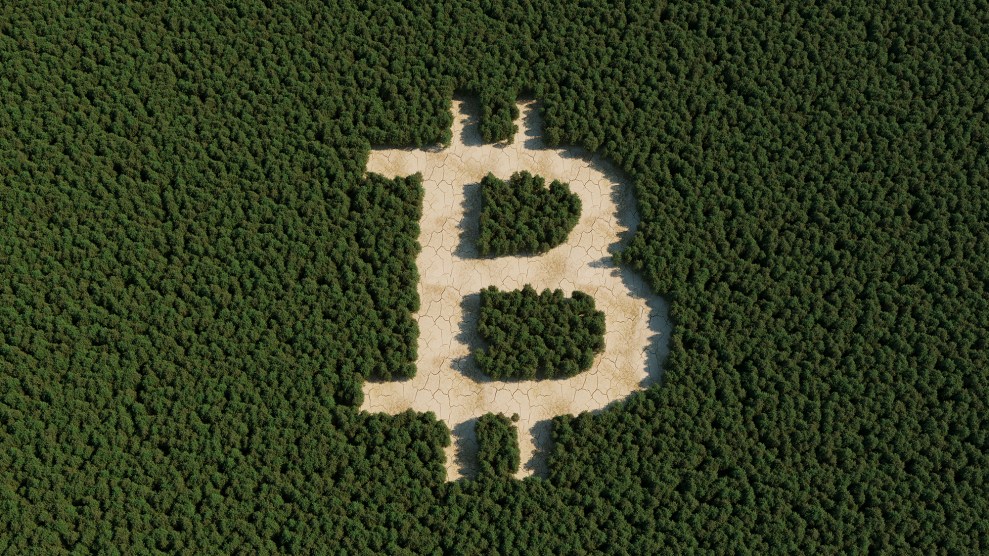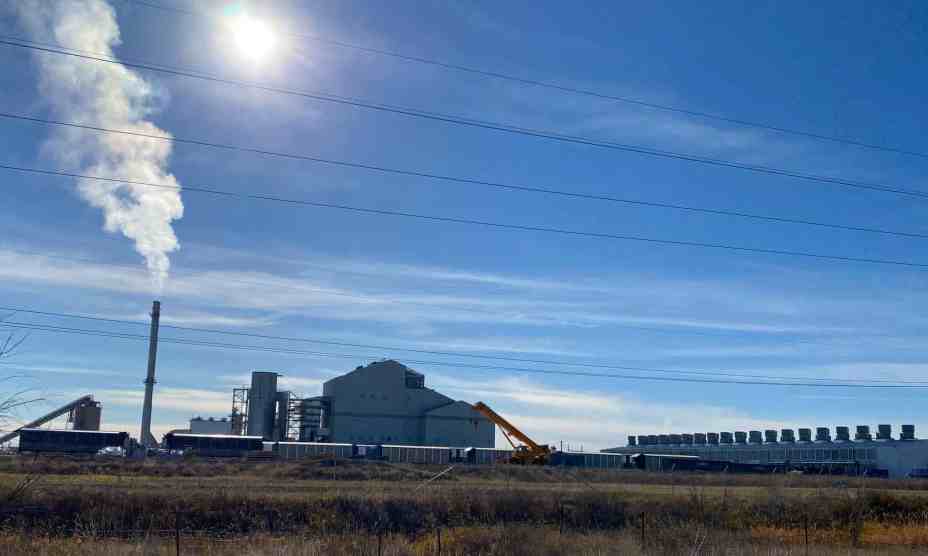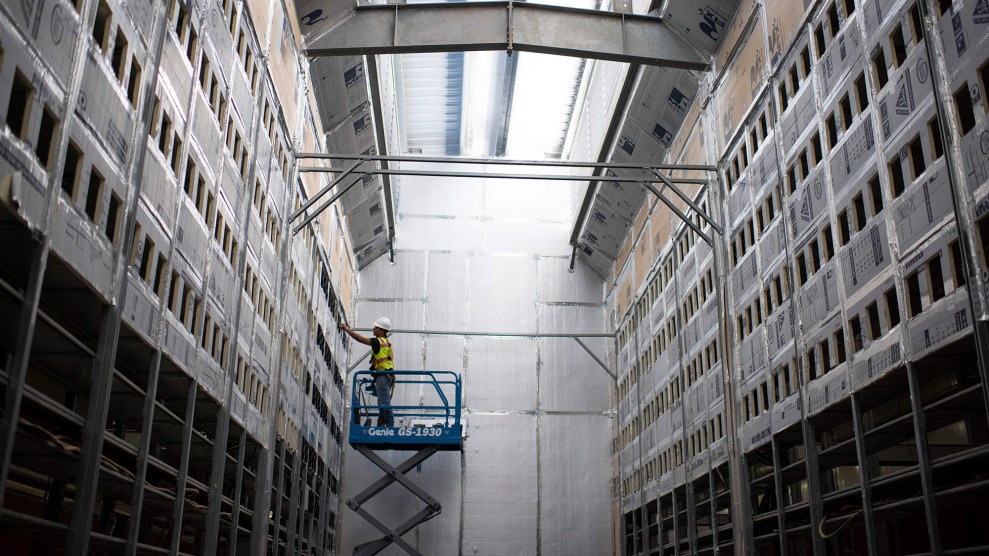
A worker installs a new row of mining machines at the Whinstone US Bitcoin facility in Rockdale, Texas.Mark Felix/AFP/Getty
This story was originally published by Inside Climate News and is reproduced here as part of the Climate Desk collaboration.
The Biden administration is now requiring some cryptocurrency producers to report their energy use following rising concerns that the growing industry could pose a threat to the nation’s electricity grids and exacerbate climate change.
The Energy Information Administration announced last week that it would start collecting energy use data from more than 130 “identified commercial cryptocurrency miners” operating in the US. The survey, which started this week, aims to get a sense of how the industry’s energy demand is evolving and where in the country cryptocurrency operations are growing fastest.
“As cryptocurrency mining has increased in the United States, concerns have grown about the energy-intensive nature of the business and its effects on the US electric power industry,” the EIA said in a new report, following the announcement. “Concerns expressed to EIA include strains to the electricity grid during periods of peak demand, the potential for higher electricity prices, as well as effects on energy-related carbon dioxide emissions.”
Digital currencies such as bitcoin are produced—or “mined”—by massive data centers that essentially solve complex equations to add new tokens to an online network known as a blockchain. As the currencies have grown in popularity, they’ve required greater and greater amounts of computing power that draw increasingly more electricity from the grid.
The new EIA report found that the world’s crypto miners used as much electricity in 2023 as the entire country of Australia, accounting for up to 1 percent of global electricity demand. In the US, the report said, just 137 mining facilities were responsible for up to 2.3 percent of the nation’s total electricity demand last year—roughly the same demand as the state of West Virginia.
Because most of the electricity generated around the world, including in the US, comes from burning fossil fuels, anything that increases energy demand also increases how much carbon dioxide is released into the atmosphere. The clean energy advocacy group RMI estimates that US cryptocurrency operations release 25 million to 50 million tons of CO2 every year. That’s the same amount as the annual diesel emissions of the US railroad industry.
Locations of 52 cryptocurrency mining operations
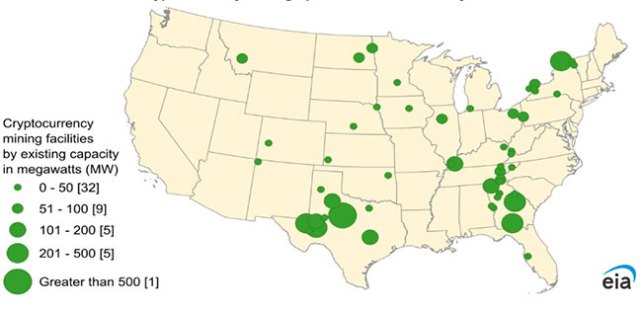
It’s an especially alarming issue in the US, where cryptocurrency operations are growing rapidly. According to the EIA report, which cites calculations by the UK-based Cambridge Judge Business School, nearly 38 percent of all bitcoin—the most popular type of cryptocurrency—was mined in the US in 2022, up from just 3.4 percent in 2020. The EIA has now identified at least 137 commercial-scale cryptocurrency mining facilities across 21 states, largely clustered in Texas, Georgia and New York.
Expanding crypto operations also appear to be raising the cost of energy in some states. In 2018, a small city in upstate New York welcomed a crypto mining company to town only to see residents’ utility bills skyrocket, prompting local lawmakers to temporarily ban the company’s operations. “I’ve been hearing a lot of complaints that electric bills have gone up by $100 or $200,” Colin Read, who was mayor of Plattsburgh at the time, told Vice. “You can understand why people are upset.”
It’s a similar situation in Texas, said Ben Hertz-Shargel, who leads grid electrification research at the global energy consultancy firm Wood Mackenzie. Besides energy-intensive crypto mining straining the state’s already fragile energy grid, he said, ratepayers are also seeing increased electricity costs.
“Nearly all hours of the year, power demand from bitcoin mines pushes up the real-time cost of electricity in Texas, which is determined every 15 minutes based on supply and demand,” Hertz-Shargel said in an email. “This raises electricity costs $1.8 billion per year on homeowners and businesses in the state, a 4.7 percent increase on what they currently pay.”
Crypto companies could mitigate some of these issues, including their impact on climate change, by developing their own renewable energy systems to reduce their reliance on the grid, Hertz-Shargel said, similar to what Big Tech companies such as Google and Amazon are doing. But not only are crypto companies not doing this, he said, they’re setting up shop next to existing renewable energy facilities, drawing clean power that would otherwise go to nearby homes and businesses.
“Every unit of clean energy consumed from the local wind or solar farm is simply diverted from another customer,” he said. “The net effect is that overall power demand on the grid goes up, which must be met by the increased dispatch of expensive and high-emission fossil generation.”
There are some cryptocurrency companies that have found ways to drastically reduce their energy footprint. In 2022, the crypto company Ethereum announced a software update that managed to reduce the carbon emissions of its mining operations by more than 99 percent.
Hertz-Shargel said other companies should follow Ethereum’s lead or they may see even more government regulation in the future.
